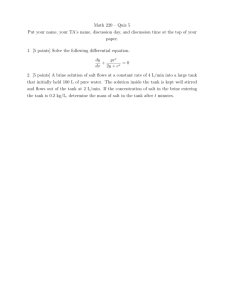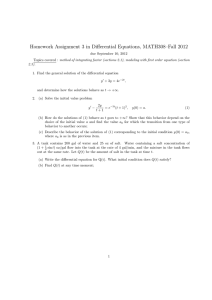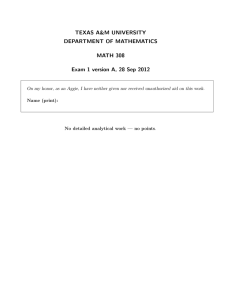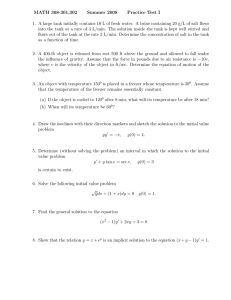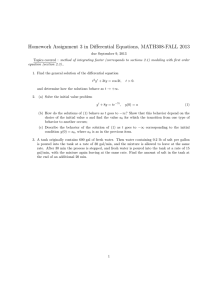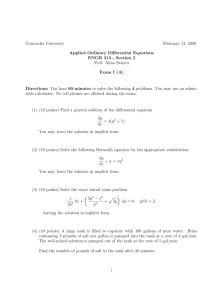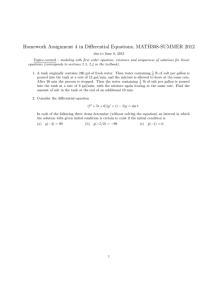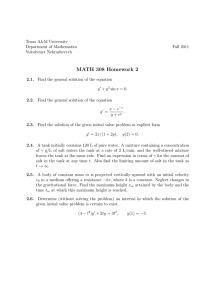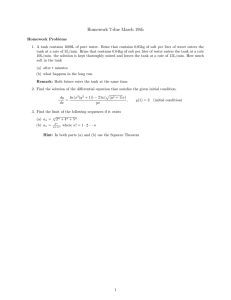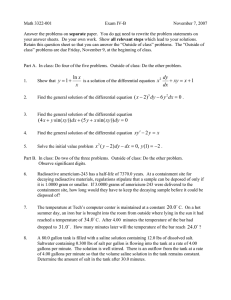Math 2250 Lab 2 Name/Unid:
advertisement
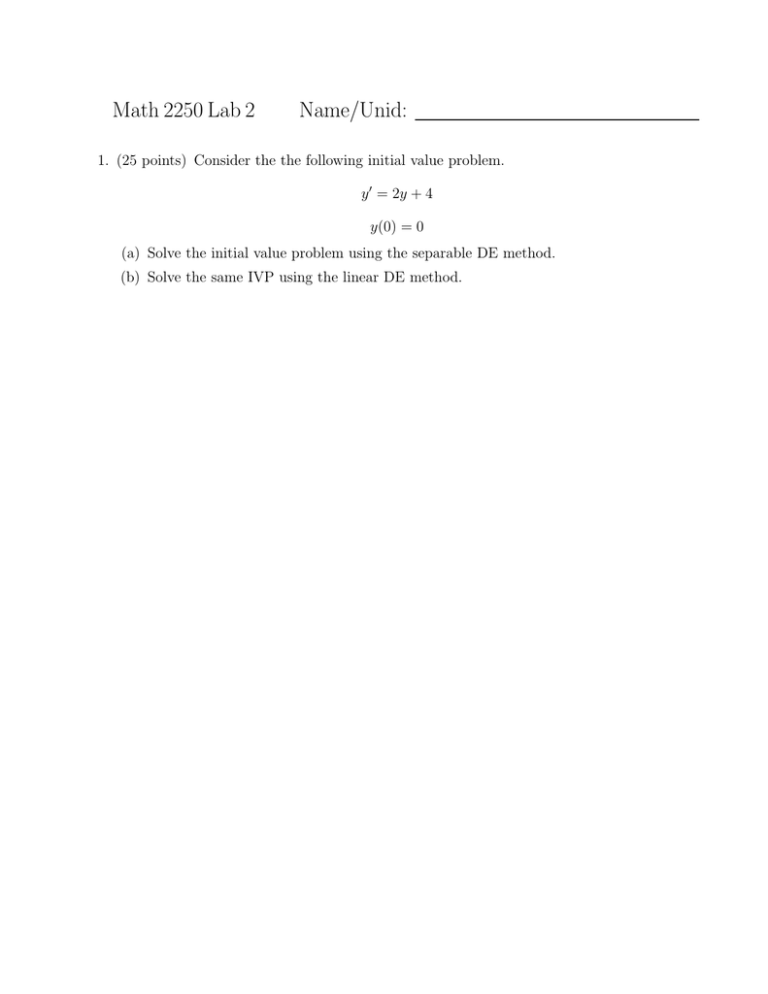
Math 2250 Lab 2 Name/Unid: 1. (25 points) Consider the the following initial value problem. y 0 = 2y + 4 y(0) = 0 (a) Solve the initial value problem using the separable DE method. (b) Solve the same IVP using the linear DE method. 2. (25 points) Consider the set up consisting of two brine tanks where water cascades from tank 1 down into tank 2, and then out of tank 2. (see figure 1.5.5 in your text book). Suppose that when the system is set into motion, the first tank contains 50 gallons of brine, while the tank below it contains 100 gallons of pure water. When the system starts, fresh water is pumped into tank 1 at a constant rate of 5 gal/min. At the same time the brine solution in tank 1 drains into tank 2 at a rate of 5 gal/min, and tank 2 drains at this same rate. Hence the volumes in both tanks stay constant. Assume that the solutions in each tank remain well-mixed, so that although the salt concentrations are changing in time, the concentration of salt leaving each tank equals the average concentration in that tank. (a) If the first tank originally contains 60 lbs of salt, solve an initial value problem to find the amount x(t) of salt in tank 1 at time t. I Find the DE which describes the dynamics of x(t). II Solve the DE. (b) Suppose that y(t) is the amount of salt in tank 2 at time t. Show first that y x − 20 . Then solve for y(t) using the function x(t) found in part (a). 10 Page 2 dy dt = 3. (25 points) Show that the substitution v = ln y transforms the differential equation dy dv + f (x)y = g(x)y ln y into the differential equation dx + f (x) = g(x)v(x). dx dy 2 Use this substitution to solve the equation x dx − 4x y + 2xy ln y = 0. Leave the final equation in terms of ln y. Page 3 4. (25 points) Match each differential equation with the corresponding vector field. For each slope field, sketch a few likely solution curves. Differential equations: x−1 dy = dx y dy = y − sin x 2. dx 1. dy = x2 + y 2 − 1 dx dy = x2 + 1 4. dx 3. Vector fields: (a) (c) (b) (d) Page 4
